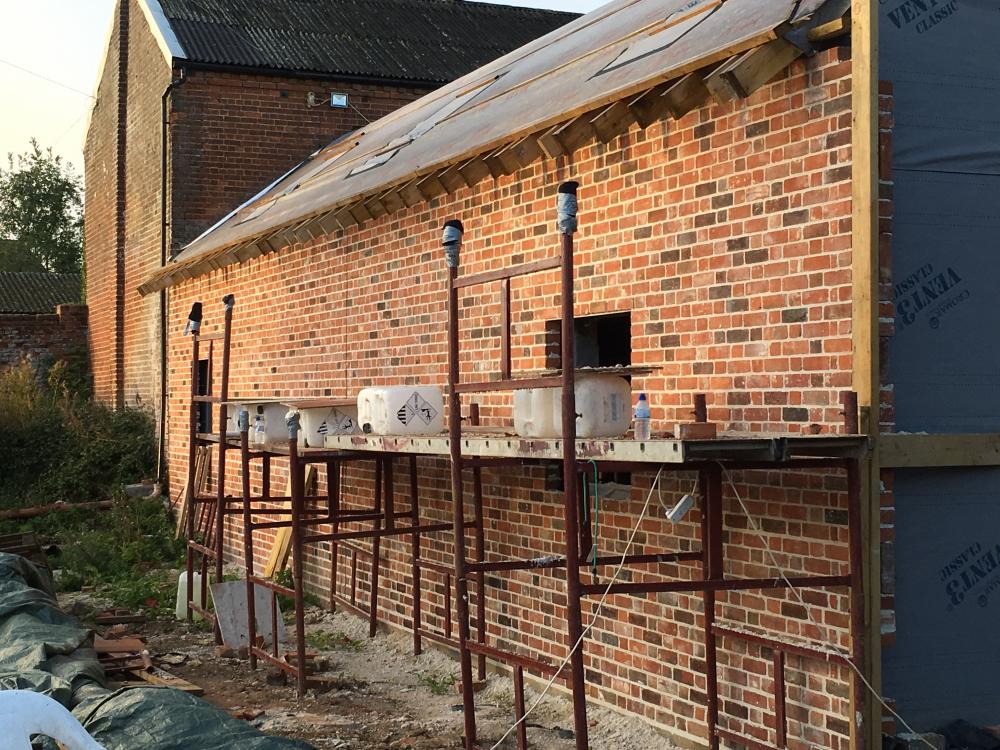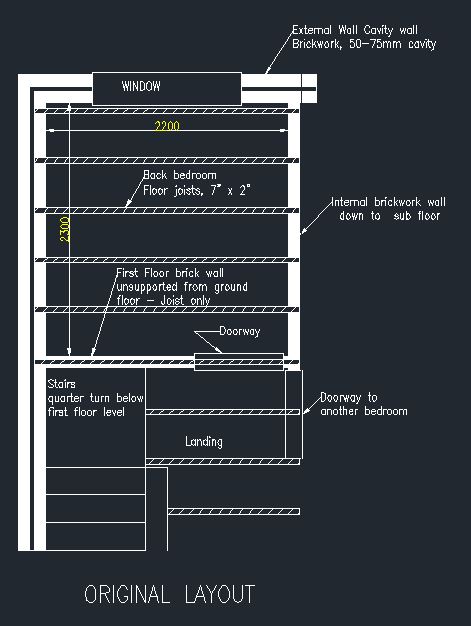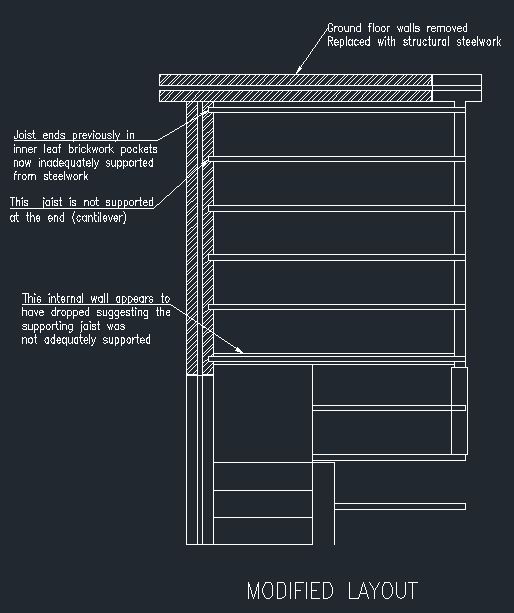Leaderboard
Popular Content
Showing content with the highest reputation on 10/10/16 in all areas
-
This is what you need. http://newtonwaterproofing.co.uk/solutions/seal-service-pipes/ They will sell it to you direct. I used it in the basement to seal foul, water & electric services running through ducts that had been cast into the wall. It basically never goes off and remains flexible. I got a generic sausage gun from amazon, the Newton one was over £70.3 points
-
Hi NSS, my Wife like yours suffers from bronchiectasis, and has been on long courses of Antiobiotics many times over the past 4 years since it was diagnosed and although building our house wasn't a driver for a better standard of health we made sure that we could get a good flow of air via the MVHR to hopefully try and alleivate the chances of recuring chest infections. The strange thing that we have found is that moving from our old house and into a draughty cold caravan and then into the new house, so far in the past 12 months their has not been one recurrence yet, whereas before every 6-9 months she would be on a course of antibiotics for 1-3 months or longer. Our fingers are crossed that maybe there was something in the old house triggering it, or just the fact that quality of air in our new house is better but something had definitely improved the situation.3 points
-
Well, it won't surprise many of you to hear that some of this thread has whistled well over my head, but I've read it all and I'm actually quite encouraged by that which I have understood. It seems likely to me, as so often is the case when opposing opinions are articulated, that the truth (in this case best practice) lies somewhere between the two, and that (hopefully) is just about where my build should end up. The ambition for me was to create a house that delivers the best possible environment for my wife, rather than the most energy efficient possible. Her health problems include chronic asthma, eczema, severe allergies and bronchiectasis (a degenerative lung condition). Due to a very rare 'syndrome' she has no sweat glands, so rapid temperature/humidity swings play havoc (and not just with her asthma), and just to add insult to injury she is T2 Diabetic (despite weighing little over 6 stone) and has high blood pressure, reflux and osteoarthritis. As I set about researching the home I should build, air quality was, unsurprisingly, my main concern. Ebuild certainly informed my opinion, but I decided quite early that PH levels of air-tightness, insulation and energy efficiency were not for us. Yes we'll have a well insulated home; yes we'll have MVHR with F9 filtering (oversized so hopefully capable of more ACH than may be prescribed as we REALLY don't want to be opening windows); and yes we'll have it reasonably airtight (I'm aiming for around 2 and if we achieve better I may well engineer some 'leaks'). I don't expect the house will demand too much heat input from the UFH (driven by ASHP) but I'm quite happy to force a need for more by bypassing the MVHR unit's heat exchanger in winter (using the summer bypass, not by opening windows!) if that proves to help air circulation (due to the additional convection) and management of humidity levels. As for solar gain, I wait to see whether the SageGlass (electrochromic) glazing on the southern elevation proves to be as good as the manufacturer claims at regulating unwanted SG at warmer times of the year, whilst allowing us to benefit from it on sunny winter days. Finally, as we're building a chalet bungalow, it was a no-brainer to go with a warm roof throughout, even in the non-habitable spaces. Time will tell whether the 'gut feeling' that has largely steered my decisions will provide the home that can give my wife the best environment for her wellbeing, but this thread has at least convinced me that I have a fighting chance.3 points
-
2 points
-
1 point
-
It's all a matter of who you know. I worked on sites for years so knew everyone that I needed to do jobs on my house and who I could trust. If you know nobody at all then it's probably better to employ a main contractor who will run the show and just leave you to sign the cheques. Most people are in between where they will let a builder do certain jobs and then they will either get friends and family in or do it themselves. So how much you end up paying basically depends on who you know.1 point
-
1 point
-
1 point
-
The rules on this have changed (amendment to general permitted development rights) - http://www.gov.scot/Publications/2016/06/2685/81 point
-
Secretly I am but don't tell anyone because I'm trying to act real casual about how it came out1 point
-
Another one to say that is some very nice looking brick laying there, you should be well pleased with that.1 point
-
1 point
-
1 point
-
That made me laugh - I know what we've borrowed and roughly what savings we've used up but also have the 'one eye closed' approach to budgeting at the moment. Also prepared for the VAT return to be underwhelming - I started a spreadsheet but it fell by the wayside early on and I just have a big box of paper to wade through!1 point
-
I haven't had the time (/nerve!) to do the final calcs yet, but we're in a suburban area on the Surrey/Hampshire borders, and I'd say our house came out at between £1500 and £1600 per m2, excluding landscaping. That was with an MBC foundation and frame, and us managing follow-on trades (mostly using local tradespeople). Oh, and that includes the cost of an attached double garage and workshop/store, which I haven't factored into the floor area when doing the calcs The kitchen was from a local supplier, based on Crown carcasses (they use Blum hardware). We have 2 ensuites and a family bathroom upstairs, polished concrete floors throughout downstairs, MVHR and an ASHP. The MVHR was installed by us, and the ASHP was installed by us with the help of a very handy electrician. Most everything else was done by tradespeople rather than us. Windows and doors are high quality German triple glazed. Looking back now, there are areas we could definitely have cut some costs with better knowledge of the process, but overall I don't know that we'd have come in much below £1500/m2 unless we drastically changed the spec. I also have no idea what our VAT rebate will look like. The numbers above assume that will be zero, but I suspect it could reduce the cost by a few quid per m2.1 point
-
i share the concern that 50mm is not enough insulation. You need to get some more insulation UNDER the existing joists as well as in between them.1 point
-
Go for good air tightness or you will let allergens in! go for the good filters that you are planning, there will be a cost, change regularly. go for a good air handler, Genvex and a good designer, Europeans seem better than here though there is a very good company here.1 point
-
Just seen this - at that price I'm sending him all mine now !! http://www.ebay.co.uk/itm/A1-A0-LARGE-FORMAT-DRAWINGS-PRINTED-FOR-YOU-BUILDERS-PRINTER-SERVICE-NEXT-DAY-/131960394735?hash=item1eb973d3ef:g:roQAAOSwGotWlOU~1 point
-
I have Bison hollowcore floors in my current house and believe that I will be using the same ones in the new house. They haven't been ordered yet. You give them the plans and the come precut to size and just sit on top of the blockwork. They are absolutely fantastic, the kids can run around upstairs and you can't hear or feel anything. The downsides are they are more expensive and they are a lot thicker as you cannot run services inside them. I have over 400mm between the ground and first floor. 200mm slabs, plus 100mm below and 110mm of insulation and screed above. Partly that is due to some 7m spans. If the max span was 6m they would use 150mm. Also I have ended up with a very thick foundation slab due to the weight, at least that is what the SE said, I didn't go into the details. The internal ground and many of the first floor walls are blockwork as I have a second floor which is also concrete. The SE ended up specifying a 200mm thick floorslab. 150mm of full fill polystyrene beads is only going to give a U-Value of around 0.2. It would maybe fall to around 0.17 with aerated blocks. You would then need internal insulation to get down to 0.15. I am using 100mm of Celotex CW4000 in a 150mm cavity and 25mm of internal insulation to get to 0.15 U-Value with Porotherm walls. The U-Value could be similar or better with lightweight blocks. You can also make the internal insulation thicker if you want a better U-Value. I did briefly look into full fill with polystyrene beads. It wasn't clear if building control would allow it in Scotland. Full fill cavities are generally not allowed up here due to driving rain, you would probably have to persuade them it was not an issue, but it would probably be fine in England. I guess the point is that you can achieve the kind of 0.15 U-Value you are looking for with a blockwork cavity wall and insulation and it is probably the cheapest and most substantial feeling building method. When looking at insulation the walls sometimes don't make up that high a percentage of the outside envelope of the house. You should balance it with the roof, windows and floor. Personally I felt at 0.15 U-Value on the walls I could get better bang for my buck elsewhere. The roof is often the easiest place to gain insulation as unless you have a height restriction you can get a lot of insulation in there and achieve low U-Values relatively cheaply. Air tightness also often benefits heating costs more than U-Value especially in a larger house as you plan.1 point
-
I'm on the edge of floodzone 3a, so my preferred construction method was block and block, with EPS in a 200 cavity (for flood resilience). To achieve airtightness, we used autoclaved concrete blocks (ytong) 100 outer and 215 inner, because they use thin bed cement and can be easily cut to shape. Lightweight concrete also meant we didnt have to pile, and could go with an insulated reinforced concrete slab (so you dont need piling contractors and all the associated mess, but you do have spoil to get rid of) The building is 10m x 8m and with room in gambrel roof. The gable wall reaches 10m high. pros: construction straightforward easily handled and worked material should be very thermally efficient cons will not be as cheap as other methods (but I dever attemted to compare prices) 1st block laid on 29 April; last on 20th September (two layers and one labourer, installing easijoist floors on the way up), blocklaying goes on and on and on! would I do it again? Next time (if there is a next time) I would try to source a prefabricated, factory built house. Trouble is, its in Europe (for now) where the factories are, and Brexit has not helped the economics of sourcing pre-fabs from Europe.1 point
-
Just the particular ICF product my builder uses. He has recently been on an awareness day for a system that puts the additional insulation inside the formwork, but the cost of that system is that much more that it still makes more financial sense for him to use the system he currently uses, even though it involves more on site labour. Cladding wise I guess you can fix on anything you want, including brick slips.1 point










.jpg.c21f3ac78c9b7efd90cbdcb312744dc5.thumb.jpg.7adcad4c0e384f5ecd7d56b0618df6e5.jpg)


